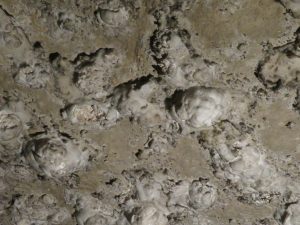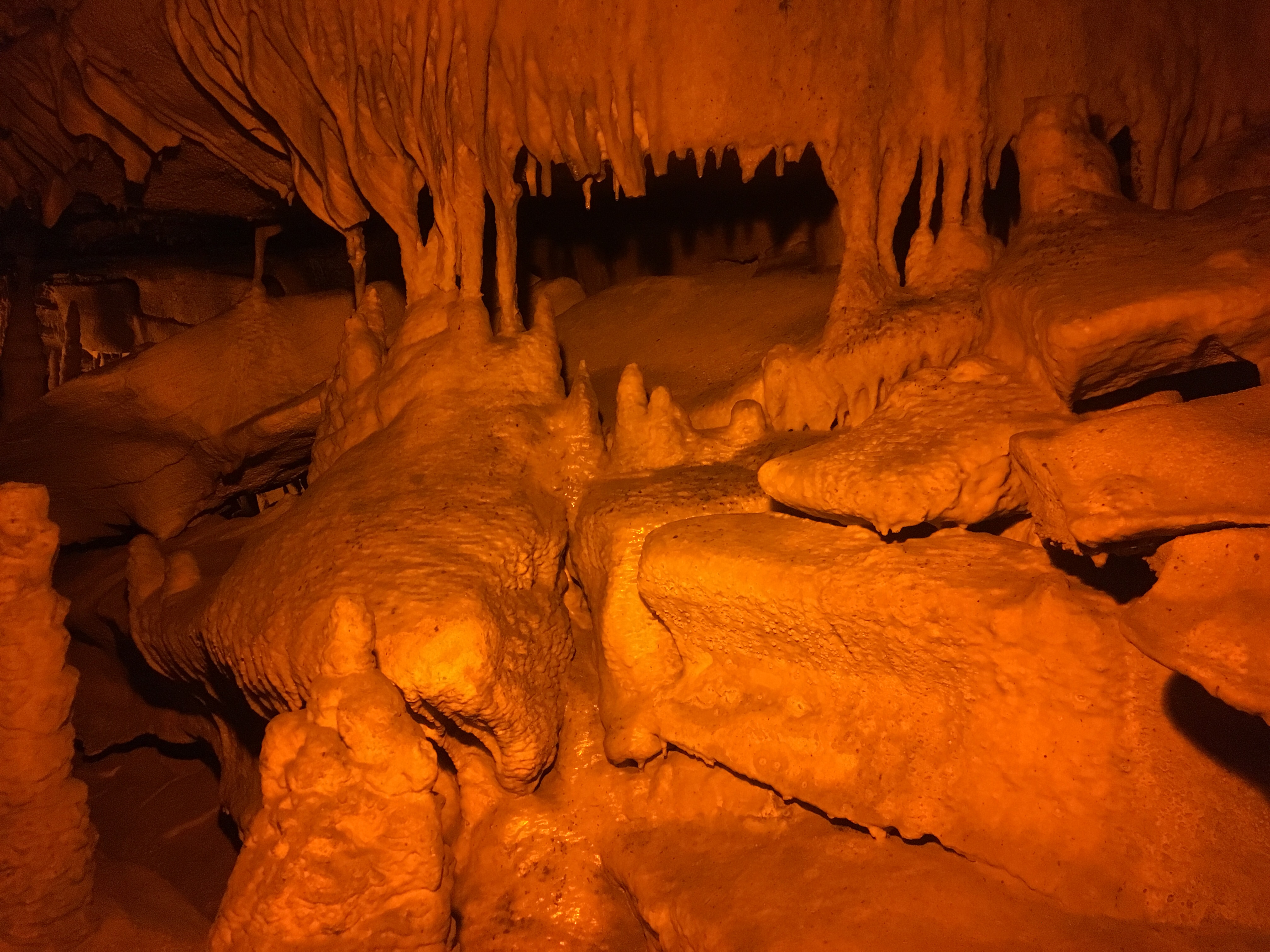We made it through our thunderstorms and mechanical challenges, arriving at Cave City, Kentucky (in the southwest part of the state) on Thursday. The cats and Hank were delighted to learn that we weren’t moving the RV again for three days!
While we sit and await the Kentucky Derby (on TV, though several Kratzers are watching it at Churchill Downs), let me recap our last couple of days.

First, let me share about the CAVES—Mammoth Cave National Park, to be exact.

We enjoyed a wonderful 4-hour cave tour, Grand Avenue Tour, led by Ranger Chris, who was excellent. We’ve done a lot of cave tours over the last couple of years, and Mammoth Cave completes our set, at least for awhile. It is the longest known cave system in the WORLD, with over 365 miles of surveyed passageways, and no other caves even come close.


Last year, we visited Carlsbad Caverns (NM), Kartchner Caverns (AZ), Wind Cave (SD) and Jewel Cave (SD), and each has its own uniqueness. Carlsbad Caverns might have been our favorite—its scope and variety are truly incredible. Mammoth Cave is mostly just big—the underground elliptical tubes go on and on, with occasional treats like the Snowball Room and the Grand Canyon.

Without a doubt, the highlight of the Grand Avenue Tour was Frozen Niagara, with gorgeous flowstone, stalactites, stalagmites, soda straws, and draperies. If you sign up for the 4-hour, 4-mile Grand Avenue Tour, the good news is there are actually flush toilets on the route (amazing!), so no worries on that score. The groups are big (we had 78 people), but they manage it well, and Ranger Chris had a big voice, so we could hear his descriptions and historical accounts just fine.


After our picnic lunch near the Visitors’ Center, we headed out for a short above-ground hike to the River Styx Spring, climbing to Sunset Point on the way back.

We ended on the Heritage Trail, which provided a moving view of the cemetery where Stephen Bishop is buried. Stephen was an enslaved African-American when he led numerous early cave tours at Mammoth Cave. He was responsible for discovering many of the early routes through the cave system. His descendants, and the descendants of other early cave guides who were also enslaved African-Americans, continued to lead cave tours for decades, well into the 20th Century.


CORVETTES: After our wonderful day at Mammoth Cave, we spent the next day doing very different activities. We started at the National Corvette Museum in Bowling Green, which is a fascinating 2-hour field trip if you’re in the area.


Hank got to pose near Roy Orbison’s 1967 Corvette (the year Hank graduated from high school), and Cindy got to pose near a 1974 Stingray (popular when she was in high school).


We also investigated the sinkhole where 8 Corvettes fell 40 feet in 2014, and only 3 could be restored. You can see the restored and destroyed Corvettes—an absorbing bit of recent history.


The highlight of the museum trip was a chance to drive in the Corvette Simulator, where Hank’s speeds topped 140 MPH and he only crashed the car about 3 times!


CABINS: We next headed in the opposite direction to the Abraham Lincoln Birthplace National Historical Park, where a replica of the cabin where our 16th president was born is on display. The cabin is protected in a monument that presages the Lincoln Memorial in Washington, D.C.


Less than 10 miles away is the farm where Lincoln lived from 2½-7½ years of age (before the family moved to Indiana and then on to Illinois), with a cabin restored from a log cabin where Lincoln’s childhood friend (who saved Lincoln from drowning) lived.


So, that’s been our time in Southwest Kentucky—Caves (Mammoth Cave National Park), Corvettes (National Corvette Museum), and Cabins (Abe Lincoln’s birthplace and a nearby farm where he lived until he was almost 8). A lot of variety and a lot of intriguing history—all are recommended. The cats gave a two-paws-up to our campsite in Cave City, where they watched robins, red-winged blackbirds, dogs, rabbits, and squirrels. Heading into the Virginias tomorrow!



